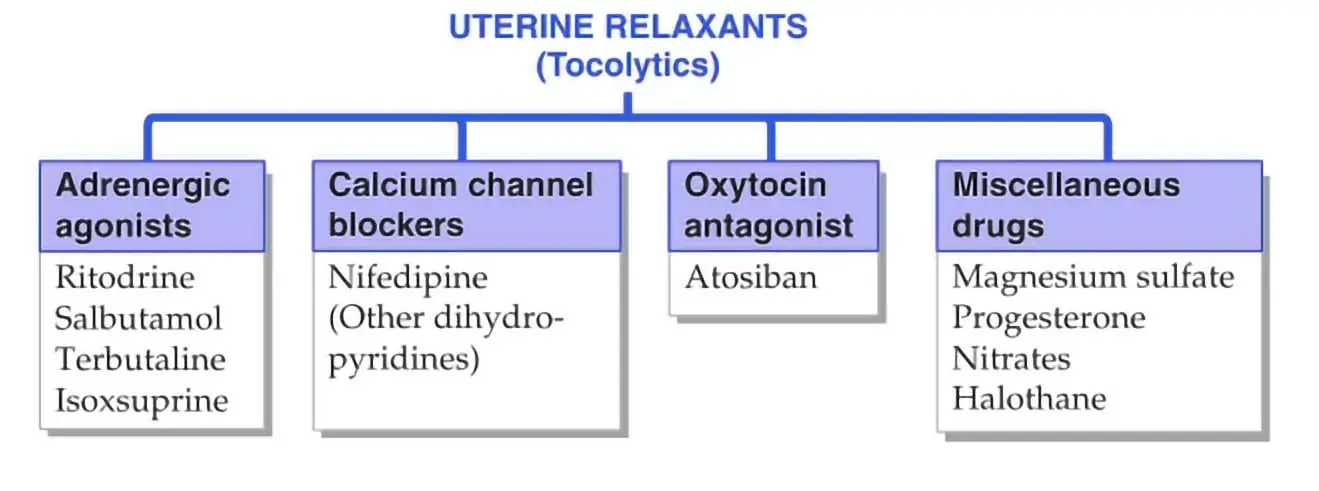Uterine relaxants are like the peacekeepers of the uterus. While uterine stimulants, which you might have heard of, help to make the uterus contract during labor, uterine relaxants do the opposite – they help to calm things down.
Table of Contents
When Are They Used?
Uterine relaxants come into play when the uterus gets a little too excited, and contractions start happening at the wrong time. This can be risky, especially during pregnancy. Sometimes, these contractions can lead to preterm labor or other complications.
Types of Uterine Relaxants
There are various types of uterine relaxants, and they’re used depending on what’s causing the contractions:
- Tocolytics: These are the heavy hitters in the uterine relaxant world. Tocolytics can stop contractions quickly. They’re often used when doctors need to delay labor. The most common tocolytic is ritodrine.
- Magnesium Sulfate: This one is like the gentle giant of uterine relaxants. It’s often used to prevent seizures in pregnant women with conditions like preeclampsia. As a bonus, it can also help relax the uterus.
- Nifedipine: You might have heard of this as a treatment for high blood pressure. Interestingly, it can also help relax the uterus and is used when contractions are happening too early.
Classification
UTERINE RELAXANTS (Tocolytics)
- Adrenergic agonists- Ritodrine, Salbutamol, Terbutaline, Isoxsuprine
- Calcium channel blockers- Nifedipine (Other dihydro- pyridines)
- Oxytocin antagonist– Atosiban
- Miscellaneous drugs- Magnesium sulfate, Progesterone, Nitrates, Halothane
Reference
- Classification of Progestins- KD Tripathi
- National Library of Medicine- Drugs acting on the pregnant uterus
Related Links

I am a Registered Pharmacist under the Pharmacy Act, 1948, and the founder of PharmacyFreak.com. I hold a Bachelor of Pharmacy degree from Rungta College of Pharmaceutical Science and Research. With a strong academic foundation and practical knowledge, I am committed to providing accurate, easy-to-understand content to support pharmacy students and professionals. My aim is to make complex pharmaceutical concepts accessible and useful for real-world application.
Mail- Sachin@pharmacyfreak.com
